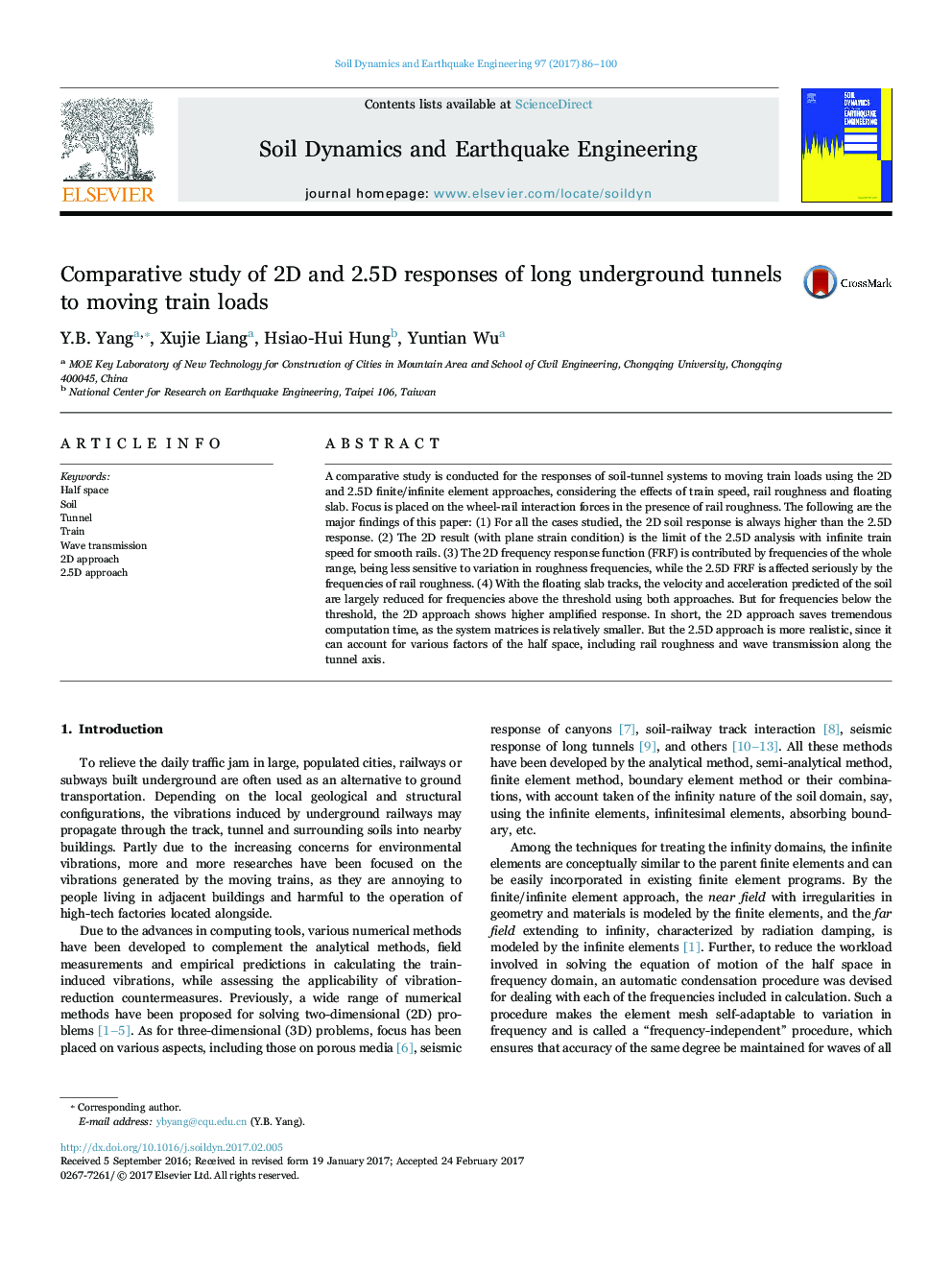| Article ID | Journal | Published Year | Pages | File Type |
|---|---|---|---|---|
| 4927113 | Soil Dynamics and Earthquake Engineering | 2017 | 15 Pages |
Abstract
A comparative study is conducted for the responses of soil-tunnel systems to moving train loads using the 2D and 2.5D finite/infinite element approaches, considering the effects of train speed, rail roughness and floating slab. Focus is placed on the wheel-rail interaction forces in the presence of rail roughness. The following are the major findings of this paper: (1) For all the cases studied, the 2D soil response is always higher than the 2.5D response. (2) The 2D result (with plane strain condition) is the limit of the 2.5D analysis with infinite train speed for smooth rails. (3) The 2D frequency response function (FRF) is contributed by frequencies of the whole range, being less sensitive to variation in roughness frequencies, while the 2.5D FRF is affected seriously by the frequencies of rail roughness. (4) With the floating slab tracks, the velocity and acceleration predicted of the soil are largely reduced for frequencies above the threshold using both approaches. But for frequencies below the threshold, the 2D approach shows higher amplified response. In short, the 2D approach saves tremendous computation time, as the system matrices is relatively smaller. But the 2.5D approach is more realistic, since it can account for various factors of the half space, including rail roughness and wave transmission along the tunnel axis.
Related Topics
Physical Sciences and Engineering
Earth and Planetary Sciences
Geotechnical Engineering and Engineering Geology
Authors
Y.B. Yang, Xujie Liang, Hsiao-Hui Hung, Yuntian Wu,
